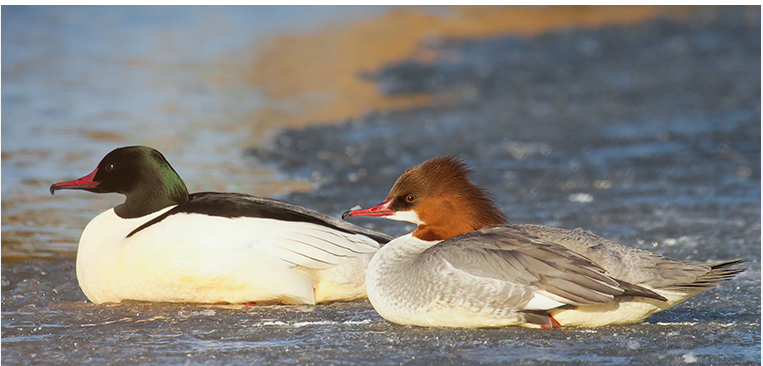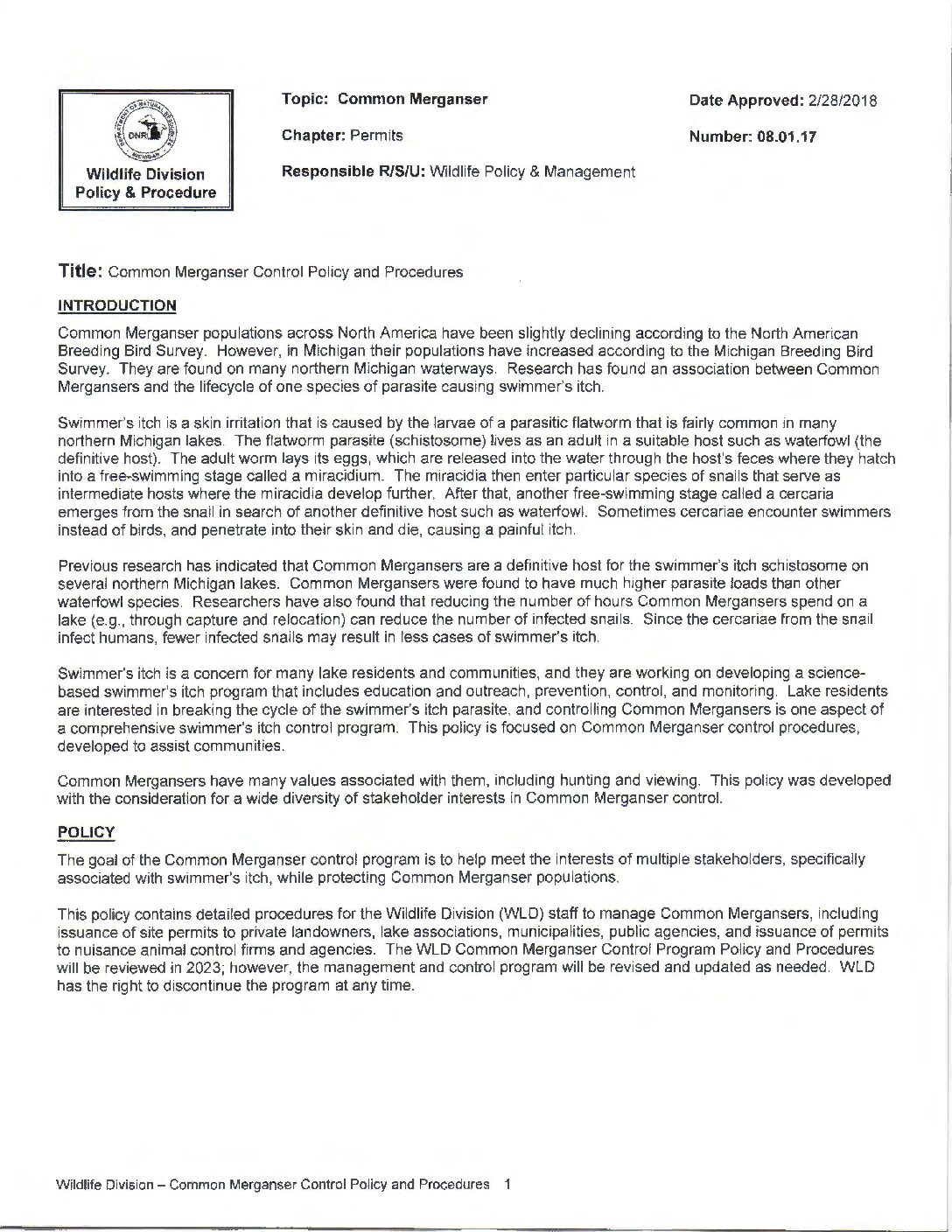Mark Long, Swimmers Itch committee
There has been significant research that indicates that the Common Merganser is the most common and prolific carrier of the parasitic flatworm that causes Swimmer’s Itch. Michigan allows the relocation of these birds and other measures such as harassment to discourage their inhabitation if Swimmer’s Itch is proven present. These measures require a permit and have special guidelines and rules around the processes. No harassment measures are allowed in Michigan during Waterfowl hunting seasons.
-
- See the attached White Paper on Common Merganser permits on Wildlife Policy & Management for the state of Michigan.
You can discourage mergansers from nesting on your lake property in Minnesota by implementing non-lethal harassment and potentially removing existing nests with a permit. You can also consider measures to make your property less attractive for mergansers to nest, such as reducing the availability of suitable nesting sites.
Here’s a more detailed breakdown:
1. Non-lethal Harassment
Scaring or Hazing
You can scare or chase mergansers away from nesting areas by making noise, waving your arms, or using visual deterrents.
Disturbing Nests
Knocking down unfinished nests or disturbing active nests (with proper permits) can discourage further nesting attempts.
-
- Note: While non-lethal harassment is generally allowed on private property, it’s important to avoid any actions that could harm the birds.
2. Making Your Property Less Attractive
Remove or Modify Nesting Sites
Remove or modify potential nesting sites like trees with cavities, old buildings, or chimneys.
Maintain Nesting Boxes
If you have nesting boxes, ensure they are predator-proof and regularly maintained, according to a report by the Star Tribune.
3. Permits and Regulations
Migratory Bird Treaty Act
Common Mergansers are protected under the Migratory Bird Treaty Act (MBTA), so you’ll need permits to destroy nests or eggs without approval.
MN DNR Permits
You may need a permit from the Minnesota DNR for certain activities, such as removing or destroying nests, particularly if it involves aquatic vegetation or altering the shoreline.
Important Considerations
Nesting Season: The nesting season for mergansers is roughly from May 1st to August 15th.
Health and Safety: Removing or disturbing nests can be done for health and human safety concerns, but it’s still best to obtain permits.


